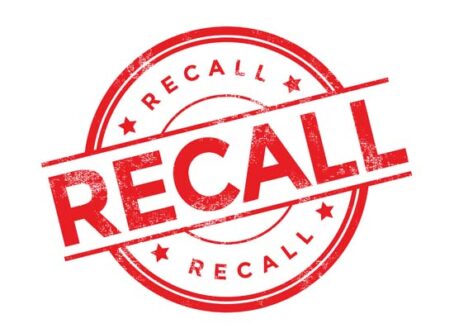ELD manufacturers say they are ready for end of 3G
With the sun setting on the 3G cellphone network, truckers have been told for some time now that the electronic logging device they rely on could become obsolete. As AT&T becomes the first carrier to turn the lights off on their 3G network on Feb. 22, many drivers are left wondering if their ELDs will continue to meet the Federal Motor Carrier Safety Administration’s compliance guidelines.
Land Line contacted every manufacturer from the FMCSA’s database of registered ELDs, around 250 companies. Of those, we received about 80 “undeliverable” responses from now-defunct companies. Of the remaining 170, we received 44 responses from manufacturers echoing a similar sentiment: They are well prepared to handle the 3G sunset.
“Out of the tens of thousands of ELDs we have out there in the market, none of them will have their compliance interrupted,” said Jeffrey Farrington, president of Knoxville, Tenn.-based ELD Solutions.
Most companies responding said that they are already operating at 4G or higher. The companies that did respond about having 3G ELDs on the road cited only a small portion of their customers were still running on the soon-to-be-phased out network. Farrington said that it is larger fleets – rather than small fleets and owner-operators – that are affected the most.
“We are also finding that carriers with 50 trucks or more are the ones who are most affected due to them purchasing ELDs (or actually AOBRDs at that time) prior to the mandate,” Farrington said. “A lot of small carriers who bought ELDs in 2017 are probably, for the most part, in good shape since a lot of ELD providers out there are relying solely on a direct local connection to the vehicle as opposed to using cellular data.”
ELD technology
A large portion of ELDs on the road don’t rely on a particular network but instead operate through the driver’s cellphone or tablet. Because of this, the ELD itself will not be affected by the 3G sunset. However, those drivers will need to be sure the phone or tablet they use will not be affected.
AT&T provides a list of devices that support 4G or higher. Most of the devices are phones manufactured in 2014 or later, so if your phone is less than 7 years old you’re likely still in good shape. For those users with older phones, a simple upgrade would be enough to bring them to compliance.
Some ELD manufacturers are learning from the headaches that have come along with converting users from one network to another. Calgary, Alberta-based Fleet Hawks uses E-Sims (electronic sim cards) in their devices. This allows their technology to easily be upgraded to future networks as older networks inevitably go offline.
3G ELDs on the road
Of the 44 responses, just six companies responded that they have devices still operating on the 3G network. The rest are operating on 4G or higher, ensuring compliance for the foreseeable future. Many of the companies we contacted had gone into business after the original December 2017 compliance date set by FMCSA. Because of this, those manufacturers were aware of the impending sunset and were proactive with their equipment.
Most manufacturers with 3G ELDs on the road have done their part to ease the transition for users. Andie Rodriguez, senior communications manager with San Francisco-based Samsara, said her company is taking care of everything they can for the small portion of their customers that will be affected.
“The few hundred customers who are impacted by the impending 3G sunset, we worked closely with them over the past several months to get them upgraded as seamlessly as possible,” Rodriguez said. “This included complimentary hardware upgrades – something we’ve long provided as part of our subscription model – 24/7 customer support, and installation instructions for new devices.”
Tim DeMonte, president of Toronto-based TrackM2M, said his company is well on its way to getting all of their customers up to compliance.
“One important metric I am monitoring indicates that 68% of ELDs provided by TrackM2M are 4G, and the remaining are 3G. Most of the equipment required to drive this metric toward 100% 4G has been delivered to customers and is awaiting installation,” DeMonte said.
Supply chain issues may be a problem
Most manufacturers were optimistic about a hassle-free conversion. However, Ben Hohmann, communications and marketing lead for Seattle-based Zonar Systems, said that while his company has done what they can to get in front of the 3G sunset, supply chain issues could delay the upgrade to compliant equipment.
“The majority of our large fleets are already up to date, and we are actively working with our remaining customers. We have done our best to order necessary components as supplies allow –to get ahead of ongoing supply chain delays and device shortages. We are upgrading customers as fast as possible, and any outstanding 3G devices we have on the market are being significantly decreased every day through these efforts,” Hohmann said. “While we continue to monitor the 3G to 4G situation and remediate any potential service disruptions for our customers by the current deadline, the reality is that COVID and supply chain disruptions combined with a pending sunset will likely lead some customers to lose connectivity until we can upgrade them.”
New York-based Verizon Connect also reported some drivers with 3G ELDs. Their 3G network – scheduled to end on Dec. 31, 2022 – will be the final network to go offline. Because of this, they will have until the end of the year to upgrade their customers to 4G devices. According to Krys Grondorf, director of communications for Verizon, this effort is already underway.
“Our 3G sunset is taking place at the end of this calendar year. With regard to ELDs, I can confirm that we have a very small number of customers who have 3G ELD units and have been encouraged to migrate them over to 4G this year,” Grondorf said.
Not all companies were forthcoming
Not every manufacturer we spoke with was transparent about the upcoming 3G sunset. Michael Ahart, vice president of regulatory affairs for Dallas-based Omnitracs, declined to comment on the number of 3G units his company has on the road and if their current supply would be adequate to convert those soon to be out-of-date models.
“We have that information; however, it is not available to share publicly,” Ahart said. “As our customers are contacting us, we are taking all necessary measures to fulfill orders.”
3G sunset dates
According to the FCC, the schedule for complete 3G shutdowns are as follows:
- AT&T: Feb. 22, 2022
- Sprint (T-Mobile): March 31, 2022
- Sprint LTE (T-Mobile): June 30, 2022
- T-Mobile: July 1, 2022
- Verizon: Dec. 31, 2022
Those who lose ELD service due to 3G sunsets will need to take action but can still keep the tires rolling. In accordance with FMCSA regulations, drivers must “correct, repair, replace or service the malfunctioning ELD within eight days of discovering the condition or a driver’s notification to the motor carrier, whichever occurs first.” Additionally, a paper record of duty status must be kept during that time until the ELD is back in compliance. LL









